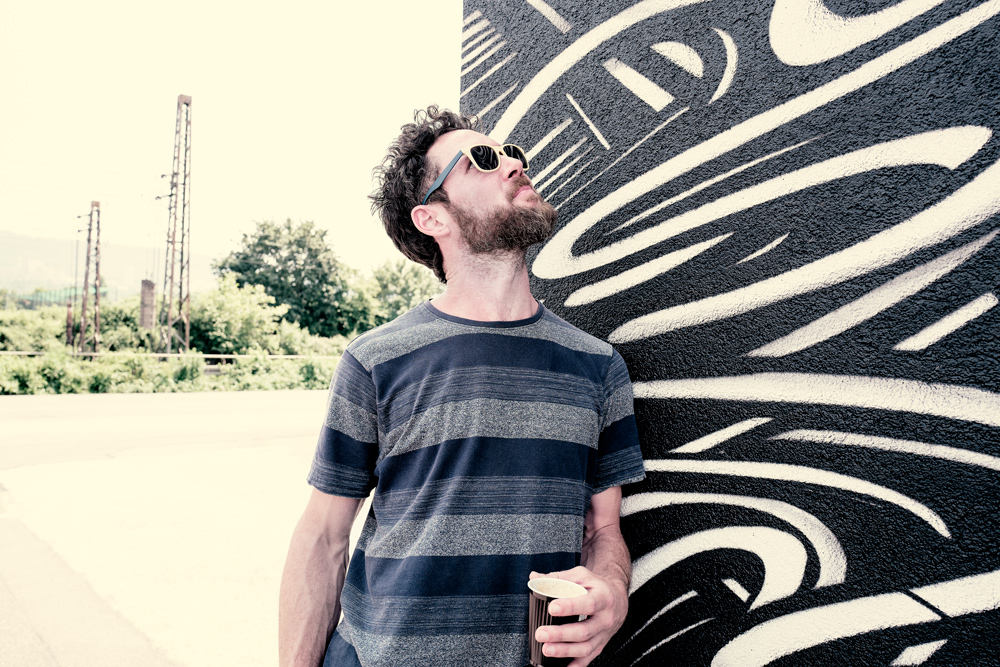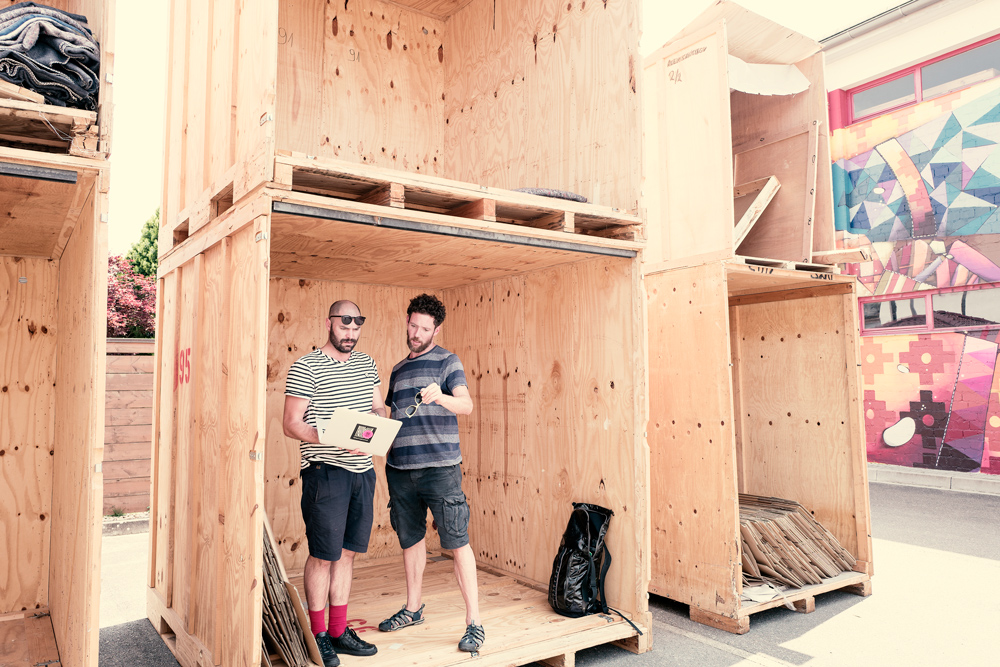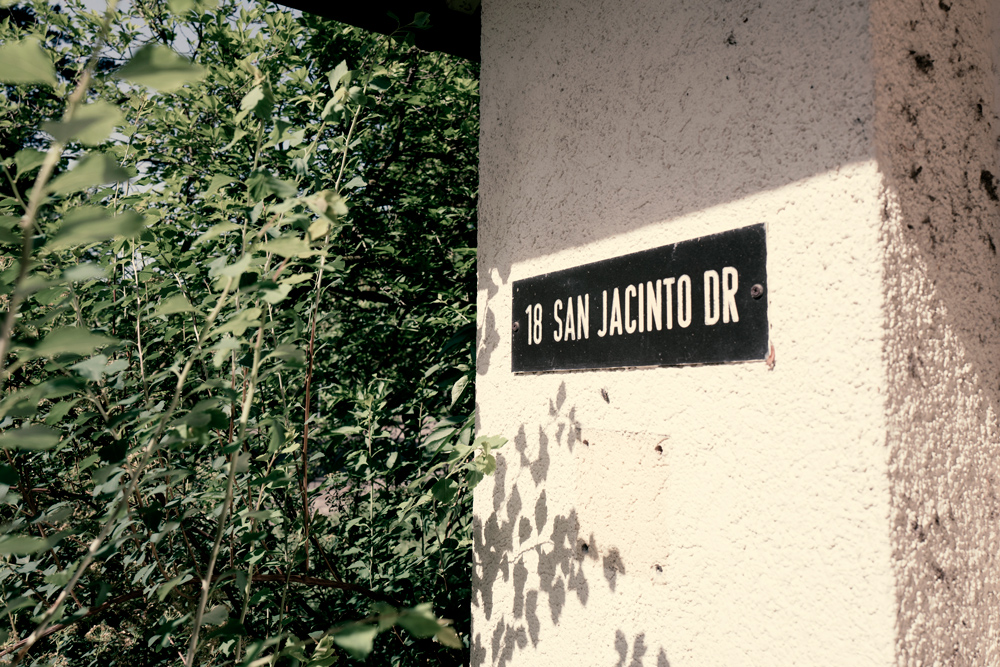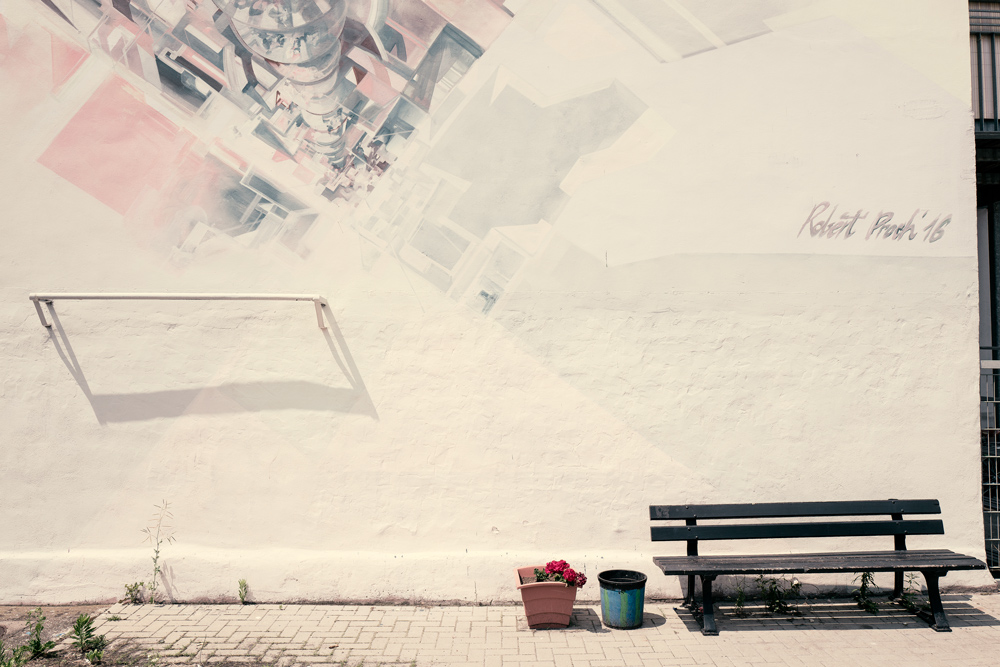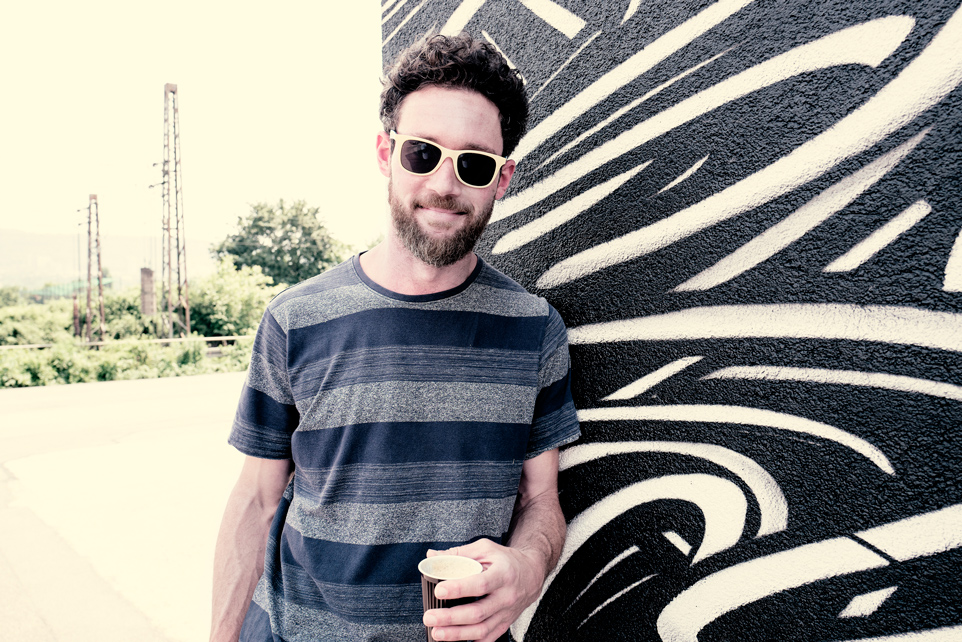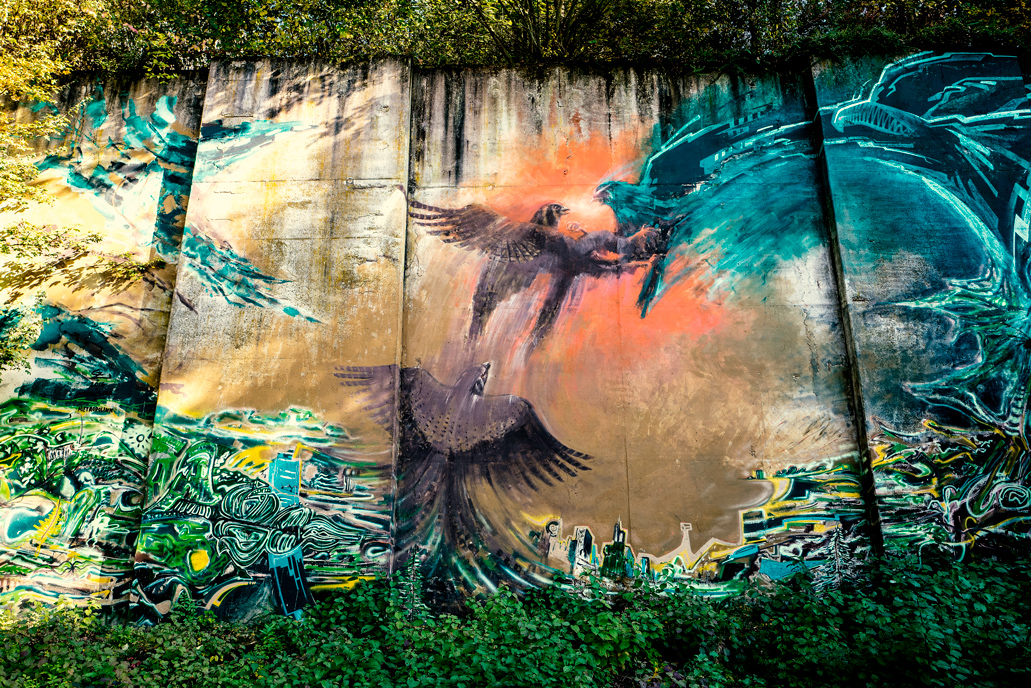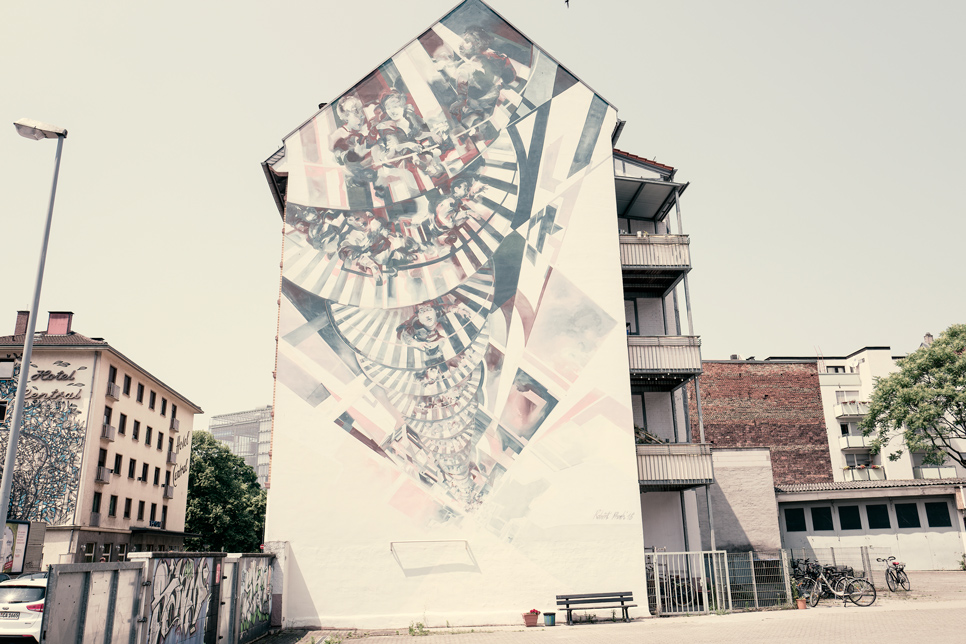The Old Bridge, the Palace and the University—everybody knows Heidelberg’s attractions. Apart from these and outside of theOld Town, large pieces of mural art have been attracting ‘cultural tourists’ since 2015. Colossal photorealistic portraits, abstract forms and surreal mythical creatures extend over formerly grey walls of buildings—pieces of public artcreated in the annual METROPOLINK street art festival add a jolt of colourto the cityscape.
Pascal Baumgärtner came up with the idea of creating a new platform for Heidelberg artists about ten years ago. During his visits to Barcelona and Rome, he experienced the local creative scene and got enthusiastic about its notion of community. Today, he is the organizer of the Metropolink festival.
In 2008, he managed for the first time to organize vacant commercial spaces in Heidelberg as a platform for local artists to temporarily present their art. Year after year, Baumgärtner’s pop-up gallery provided room for amazement time and again under changing headings and at various locations, until it became a permanent institution titled “Willi Bender” of the Heidelberg art community. Every year and in every space, there is a piece by graffiti artist Cédric Pintarelli, known as Sweetuno in the street art scene.
The hydraulics of the red lifting platform thrums in front of a multiple-family dwelling in the Heidelberg neighbourhood Rohrbach. Pintarelli stands high up on the somewhat shaky platform and steers it with a joystick along the wall. In the other hand, he shakes a spray. A rattle sounds from the ball moving through the black can. Then, gloss paint exits the head of the can and extends over the wall as fine lines or misty spray. In this manner, a colossal mural is produced in days of work; residents and neighbours are fascinated as much as the art lovers who make pilgrimages to the total of 26 façades that have been created over the years during the past Metropolink festivals.

